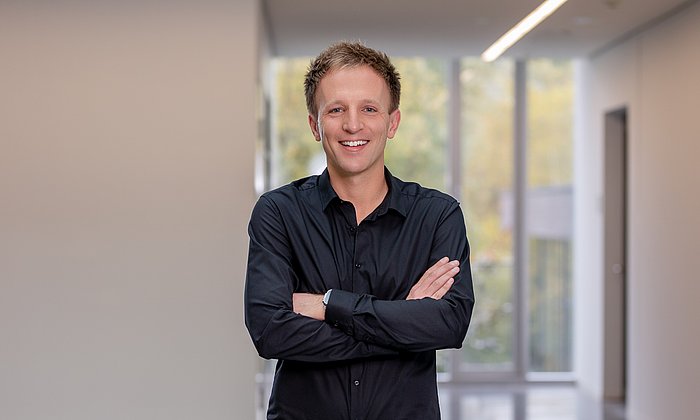E-learning project in the TUM Ideas Competition 2025/26
How a platform is transforming mathematics education

You have been developing e-learning materials for students for several years. What motivated you to engage so intensively with digital teaching?
It all started more than 10 years ago, when I wanted to build a bridge for students between the lecture and the difficult exercises they faced. I created comprehension questions as an e-test in Moodle to encourage them to engage more deeply with the material. After they responded very positively, I kept expanding my digital teaching. What motivates me most is the feedback from students that my materials really help them.
What is the focus of your new project E-learning in Mathematics Education – and what do you hope to change with it?
We are building a large question bank with electronic exercises that students from various fields will be able to use in as many courses as possible. Developing high-quality exercises is very time-consuming. My hope is to improve mathematics education in this way and create optimal learning conditions. After all, mathematics is an indispensable foundation in many technical degree programs.
The e-learning tool STACK is central to the new platform. What can this tool do that traditional exercise sheets cannot?
With STACK, you can create exercises that go far beyond traditional multiple-choice questions – for example, interactive tasks with graphics that foster visual understanding. The biggest advantages are immediate, automated feedback, the option to customize it individually, and the randomization of exercises.
Correcting traditional problem sets usually takes one to two weeks. With electronic exercises, students can see right after submitting whether their answer is correct and review the sample solution. Individualized feedback is also possible: if they make a mistake, a specific text can appear that directly addresses the error.
Through randomization, the exercises are programmed so that numbers or parameters are chosen at random, creating many different versions. If students struggle with a certain type of problem, they can practice it in a targeted way. Learning at one’s own pace is another major benefit.
You also draw on question banks from other universities such as ETH Zurich and TU Berlin. How important is cooperation across university boundaries?
Very important. We share our question banks and help each other close gaps in the collections of exercises. But our collaboration goes beyond that: we meet regularly and exchange experiences in digital teaching. We even collaborate on certain tasks – currently, for example, with FAU Erlangen-Nürnberg on the development of complex visualizations. The cooperation has been in place since spring 2024, and by now nine universities are involved in this joint project called SASIM.
Looking ahead to the next five to ten years: what trends do you see in digital higher education – and how is digital learning changing the role of instructors?
The use of digital learning formats will continue to grow. They complement traditional teaching very well. Instructors can identify early on where students are struggling and place corresponding emphasis in face-to-face sessions. Conversely, through digital feedback, students can quickly see where they should seek help. This makes it much easier to tailor teaching to their needs.
I am also convinced that students will increasingly make use of AI. Our task as instructors will be to develop a teaching concept that combines in-person teaching with AI and traditional digital learning in order to offer them an ideal overall package. According to a survey conducted this summer semester, more than 50% of students are already using AI as a tool to solve digital exercises.
In your project work so far, when have you especially felt that it has all been worth it?
Above all, it’s the consistently positive feedback from students. When someone writes, “Without the e-tests I wouldn’t have passed the math exam last semester,” or a short message comes in like, “Thank you for the 3D visualization of the directional derivative. Really great tool!” – that’s when you realize the work is worthwhile.
We recently conducted a survey among students of mathematics, physics, and various engineering programs about our e-tests. Out of 435 respondents, 402 stated that they are a valuable addition to teaching. Nearly 80% would like to see such e-tests offered in other courses as well.
Technical University of Munich
- Natalie Neudert
- natalie.neudert@tum.de


